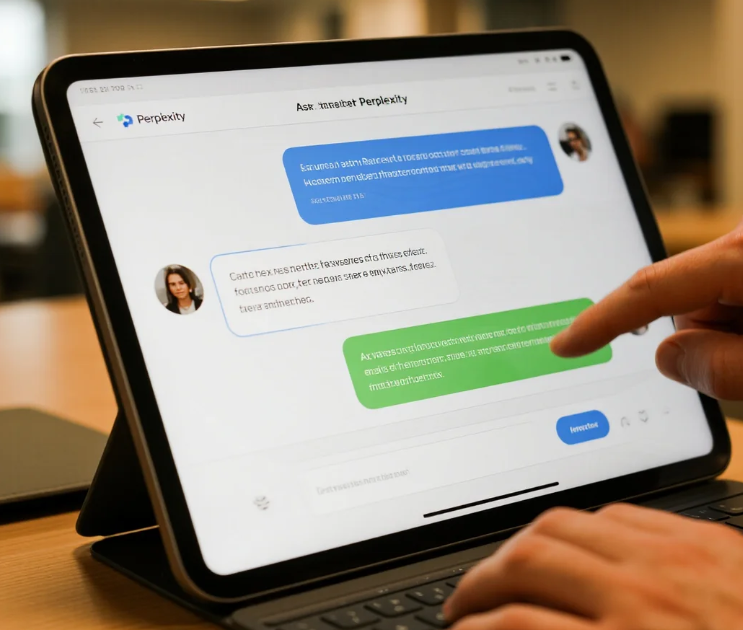Knowing how to ask Perplexity the right way can significantly boost your productivity. Whether you're researching complex topics, summarizing long reports, or sourcing citations, mastering prompt crafting is the secret to unlocking Perplexity AI’s full potential. In this guide, we'll explore proven strategies and real examples to help you get quicker and more accurate results from this powerful AI assistant.

Why Asking Perplexity the Right Way Matters
Many users expect instant results from AI tools but don’t realize that vague or poorly structured prompts can slow down or confuse the output. When you ask Perplexity using clear, structured language, you get faster, more relevant responses. Precision matters—especially when you're pressed for time or relying on data accuracy for business or academic purposes.
Pro Tip: Always frame your question with a clear goal. For example, instead of asking "Explain AI," ask "Summarize how reinforcement learning works in AI for beginners."
1. Use Specific Keywords in Your Prompt
When you ask Perplexity using concrete terms, it helps the model zone in on exactly what you want. Broad or ambiguous queries often return general results. Instead, aim for clarity and context.
? Better: "What are the top five AI writing tools in 2025?"
? Worse: "Tell me about tools."
2. Add Context for Faster, Targeted Responses
Context gives Perplexity AI a frame of reference. Whether you're doing SEO research or legal writing, specifying your audience, industry, or purpose yields higher-quality outputs.
Example (with context):
"Explain the GDPR data handling process for a European eCommerce site."
Example (without context):
"Tell me about data privacy."
3. Ask for a Format: Bullet Points, Tables, or Code
A great way to ask Perplexity for quick results is to request a specific output format. Need a list? Ask for bullet points. Want comparison data? Ask for a table. This makes responses faster to scan and easier to use.
Example Prompt: "List 10 benefits of remote work in bullet points."
4. Use Follow-Up Questions to Refine the Output
Perplexity AI retains conversational memory, allowing you to narrow down or expand a result by asking more questions. If the initial answer isn’t perfect, use follow-ups like “Can you expand on that?” or “Now summarize it in 100 words.”
5. Combine Questions for Efficiency
When you ask Perplexity multiple questions in one prompt, it saves time and keeps the output connected. This technique is especially effective when you're drafting reports or analyzing topics with multiple angles.
Example: "Compare Google Bard and Perplexity AI in terms of speed, accuracy, and data freshness. Then suggest the best one for academic use."
6. Ask Perplexity to Cite Its Sources
One of Perplexity’s most useful features is its ability to include real-time citations. If you're researching, always add "with sources" or "with citations" to your prompt. This increases reliability and transparency.
Use This:
?? "Summarize the latest WHO data on COVID-19 with sources."
?? "What are the pros and cons of CRISPR gene editing? Cite recent studies."
7. Add Constraints: Time, Word Count, or Complexity
Want a quick response? Say so. You can instruct Perplexity to limit answers to a certain word count, reading level, or time frame. This helps streamline results and improves relevance.
?? "Explain quantum computing in under 100 words."
?? "Summarize this like I'm in high school."
?? "Give me marketing trends from Q1 2025 only."
8. Use Perplexity’s Suggested Follow-Up Prompts
One of Perplexity’s standout features is its interactive follow-up suggestions. These help you refine your inquiry even if you’re not sure how to phrase the next step. Don’t ignore them—they’re designed to save you time.
When you ask Perplexity something, check the options it provides like:
"Summarize this in 5 bullet points"
"What are counterarguments?"
"Explain this using an example"
9. Ask Perplexity to Act Like a Role
One advanced way to prompt Perplexity is by assigning it a persona. This helps shape the tone and depth of the reply.
Examples:
"Act as an SEO expert and explain how to rank for long-tail keywords."
"You're a startup advisor—give me a pitch deck outline."
10. Use the "Discover" Tab for Fast Answers
If you're using the Perplexity Pro version, the Discover tab offers quick access to trending topics, research summaries, and citation-based answers. It's a great place to get instant inspiration or data-supported findings.
?? Real-Time Data
Get the latest info on any trending topic using the “Discover” feed with citation previews.
?? Expert-Led Summaries
Access curated answers by domain specialists across tech, medicine, law, and finance.
Final Thoughts: Ask Perplexity, Get Smarter
Whether you're a student, researcher, marketer, or software engineer, learning how to ask Perplexity smartly will transform your workflows. By refining your prompts, adding context, and using smart constraints, you can unlock faster, more accurate results and reduce the time spent on rework.
Key Takeaways
? Use clear, goal-driven prompts with keywords
? Ask for formats like lists or tables to scan info faster
? Always request citations when doing research
? Use follow-ups and personas to refine and personalize output
? Leverage the Discover tab for ready-made insights
Learn more about Perplexity AI
